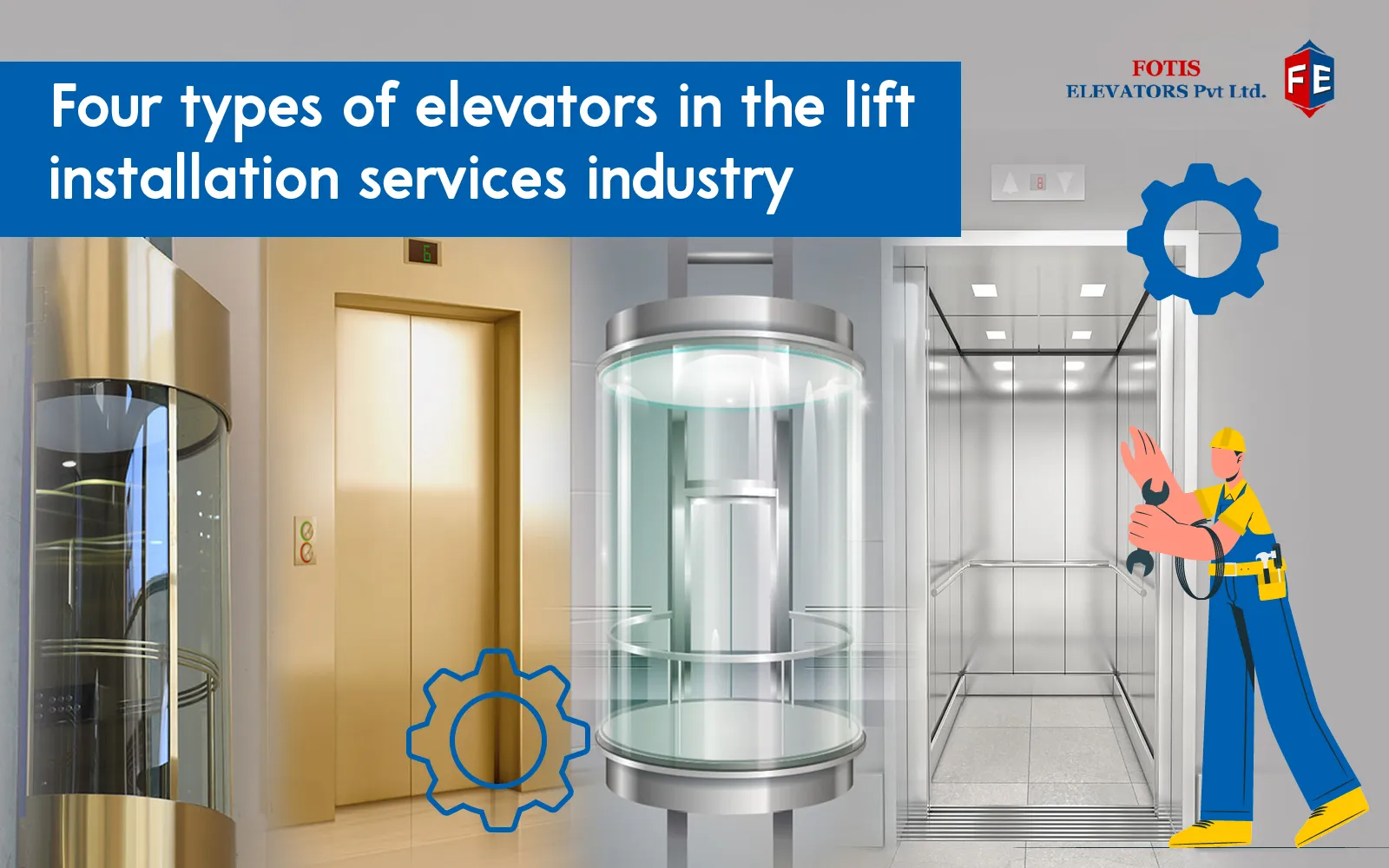Four types of elevators in the lift installation services industry

As the world stepped into a digitalized version of itself, things started to change. And with this change came different definitions of luxury and necessity. Some say that the lines between the two are blurred. However, with the development and growth in technology, the living standards were meant to rise.
Today, humans have evolved, and so have their lifestyles. They have different hobbies and preferences. Earlier, radio was popular among the young masses; now, they are intoxicated with social media. This change wasn't limited to their interests. Instead, it expanded its roots to the technology they used in their daily lives, one of them being elevators.
In the very beginning, when the elevators were newly invented, they didn't have many varieties. Plus, earlier, they were almost non-existent because they were a luxury. Now, they have become a necessity. As the lift installation services industry expanded, it created various variants of elevators for different purposes.
Geared and gearless traction elevator
These are the lifts that operate using ropes that are connected to an electric motor to function. When this motor starts, it's only then that the wheel starts moving and pulls the car into various levels.
That's why this wheel is usually in the machine room, which is located on the top floor of the building. This kind of elevator has subcategories that are explained below;
Geared traction
These lifts have a geared box attached to them, and these gears move the ropes. This kind of lift can travel 500 feet per minute, and in terms of distance, it travels up to 250 feet.
Gearless traction
These lifts don't have any gear to regulate the speed. It's one of the reasons why they can move faster than any other variant. They are among the most preferable types of skyscrapers.
Traction
These lifts have ropes that are attached to an electric motor, which is located above the shaft. These ropes play a crucial role in pulling up and lowering the lift cab. These lifts can be used in high buildings with a lot of floors.
Their speed, as compared to the hydraulic lifts, is much faster, and this system, like any other lift uses a counterweight which helps in eliminating the weight of occupants. This helps in the smooth functioning of the elevator.
Hydraulic Elevator
These lifts are supported by a piston, which pushes them up when an electric motor releases oil or any other hydraulic fluid in that piston. As a result, the lift is pushed up or down. These elevators work a lot slower than traction elevators. They are used mainly in buildings having 2 to 8 floors.
These lifts in itself have different versions;
Hole-less
These lifts are like the conventional hydraulic ones, but it doesn't need any hole or sheave below the pit because they already have telescoping pistons. This lift can move up to 50 feet, and it also has a variant that doesn't have telescoping pistons, but it can only cover 20 feet of distance.
They are among the most preferred choices because of their affordability and easy setup. Plus, these lifts also have lower maintenance costs. They have more energy efficiency as they use electric motors. However, there's a need to check them frequently because of leakage. If ignored, this issue may even turn into a big hazard or event.
Roped
This kind uses both ropes and pistons to move and enhance the movement of the elevator car. And the maximum distance it can cover is 60 feet.
Conventional
These lifts are designed with an elevator pit, and they come with a sheave that extends beneath the pit's floor. When it goes down, the pit supports the retracting piston. Like roped hydraulic elevators, it can also travel up to 60 feet. In some cases, it may even need a shallower hole below the pit, which can assist the lift when it goes down.
MRL (Machine-Room-Less) elevator
These elevators don't have specific machine rooms above the shaft. If maintenance is required, it's put in an override space and is accessed from the top of the cab. These lifts can travel 165 m of distance with a speed of 3 mps. Their control boxes are usually in the control room next to the shaft.
As compared to geared traction lifts, both are equal in terms of maintenance costs. However, when we talk about energy consumption, theirs is very low as compared to the former one. They are reliable, require less space, and work efficiently. That's why they have become a popular choice among the building owners.
Vacuum Home elevator
These kinds of lifts don't use any cables to function. Instead, they are air-driven and work on the physics law. It's like a tube in a vacuum, and the air below and above the lift is what helps it move and perform the function of going up and down. They are made of aluminum and polycarbonate materials. When the button is pushed, it forces the air pressure to push it upwards –vice versa.
Conclusion
In this new world, things have changed, some for the better, some not so much. But one thing that remains the same is the human's yearning for more and more comfort, which was fixed by the introduction of elevators. These elements have made our lives easier in ways that, now, we can't even imagine without elevators. That's why it becomes essential to understand the types of elevators that exist, as it's the only way to decide which one will work best for you.

